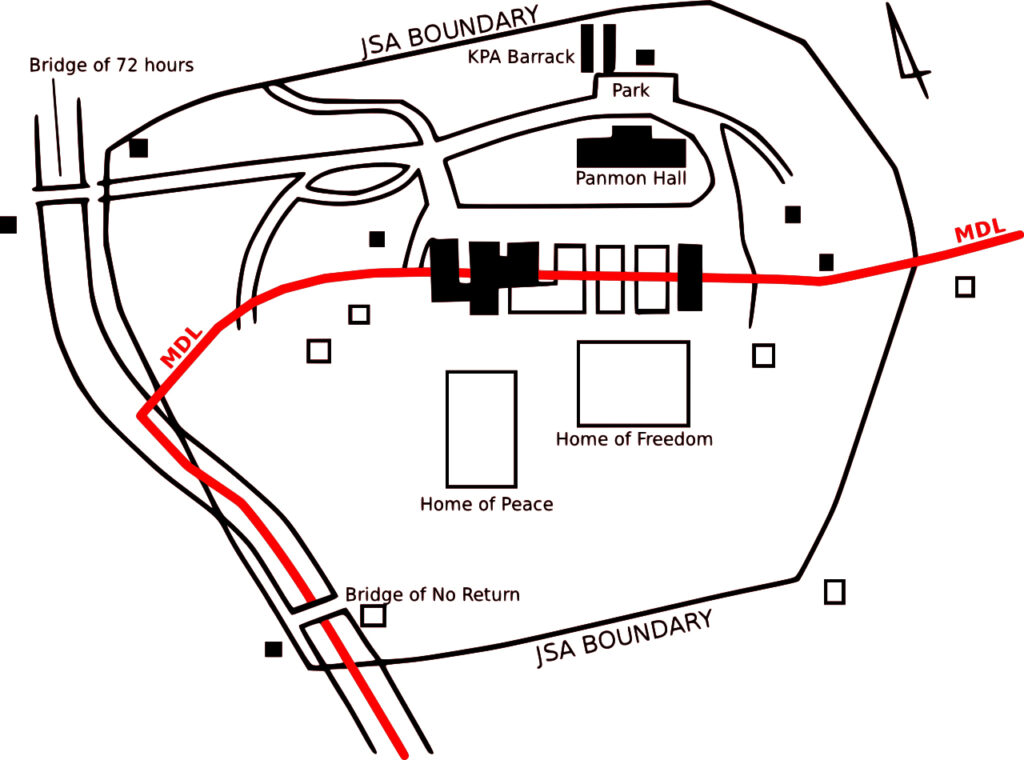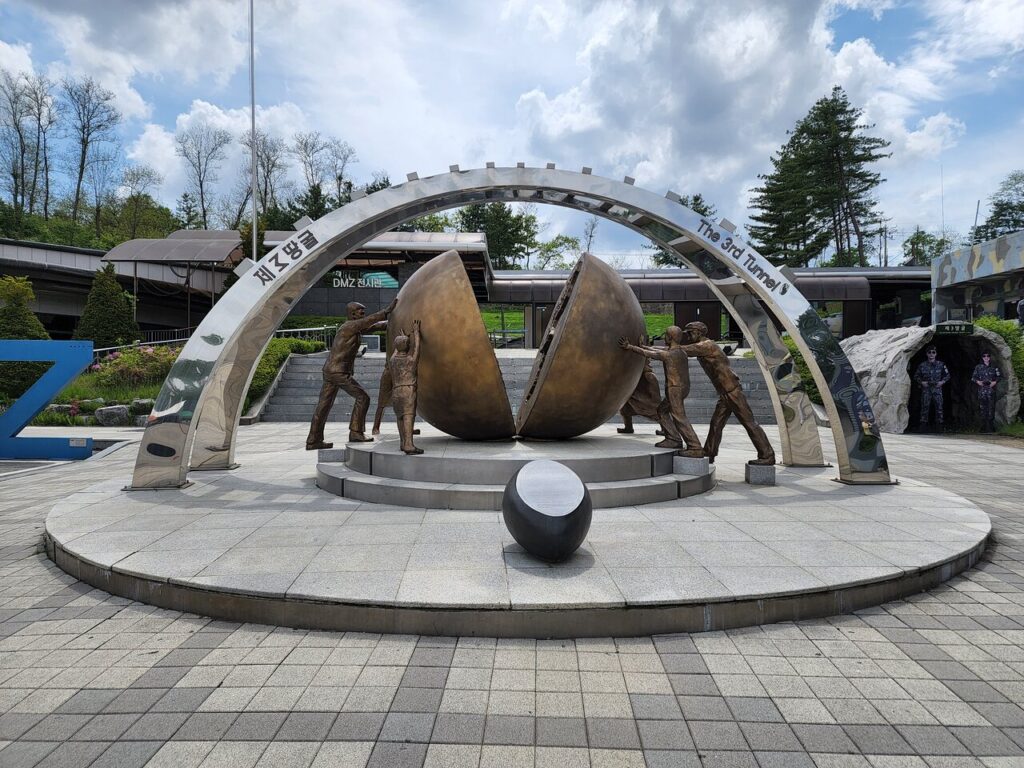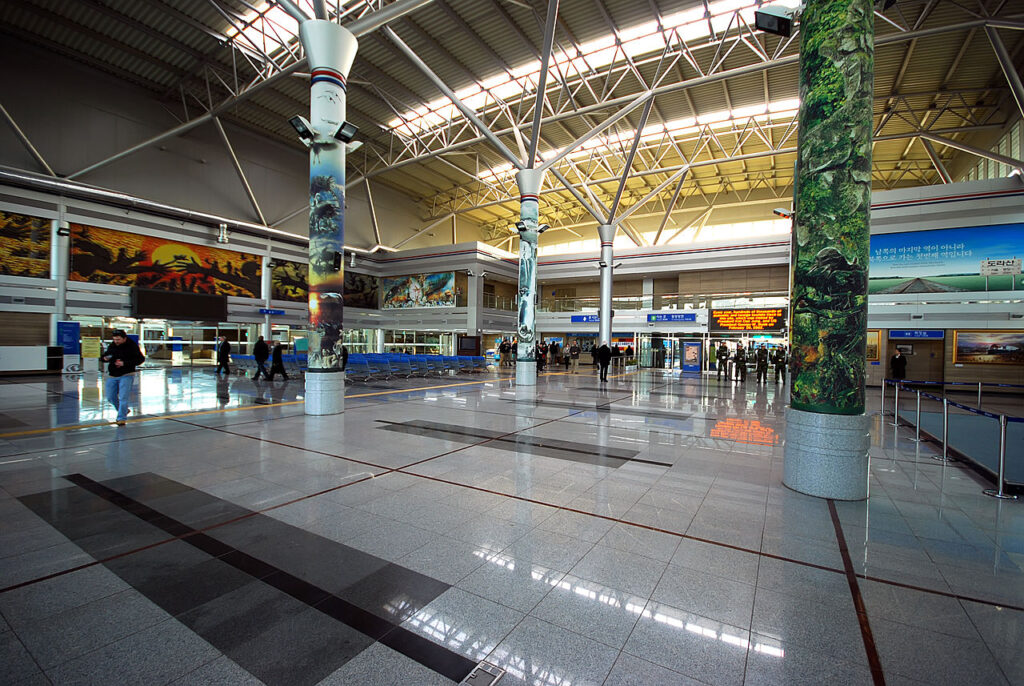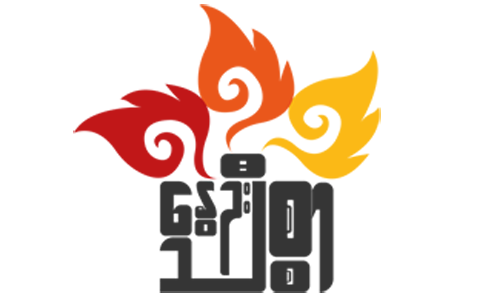The demilitarized zone (DMZ) is 250 kilo meters (160 miles) long, approximately 4 km (2.5 miles) wide and a border barrier that divides the peninsula roughly in half. It was established to serve as a buffer zone between the countries of North Korea and South Korea under the provisions of the Korean Armistice Agreement in 1953, an agreement between North Korea, their allies and the United Nations.
Within the DMZ is a meeting point between the two nations, where negotiations take place: the small Joint Security Area (JSA) near the western end of the zone.
Things to See in DMZ
- DMZ
- Imjingak Resort
- Bridge of Freedom
- The Third Tunnel
- Dorasan Station
It will take half day tour trip and you should visit there when you travel to Korea. You can plan the trip via online from these tour1 and tour2 before travel to Korea.
DMZ
The DMZ is a de facto border barrier, which runs in the vicinity of the 38th parallel north — which divides the Korean Peninsula roughly in half. The 38th parallel was the original boundary between the United States and Soviet brief administration areas of Korea at the end of World War II. Upon the creation of the Democratic People’s Republic of Korea (DPRK) and the Republic of Korea (ROK) in 1948, it became a de facto international border and one of the most tense fronts in the Cold War.
NOBODY can cross the border between two Koreas, border between North and South Korea is closed, meaning that, there is no way to travel directly from South Korea to the DPR Korea. To travel between Koreas one needs to transfer to a third country first, for example, to China or Russia. The only place where it is possible to make a couple of steps into an opposite side is T1-T3 conference rooms also known as blue houses – tent-like one-story buildings sitting just at the demarcation line.


Imjingak Resort
This park was built to console the refugees who left North Korea during the Korean War.
Imjingak Resort, located 7 km from the Military Demarcation Line, is now at the forefront of tourism related to the Korean War. Imjingak was built in 1972 with the hope that someday unification would be possible. The three-storied Imjingak is surrounded by several monuments, Unification Park and North Korea Center.
Admission : Free
Bridge of Freedom
Freedom bridge built to liberate 12,773 prisoners in 1953. The bridge was used by South Koreans returning home from the North.
Freedom Bridge is located at the back of Bangbaedan Altar in front of Imjingak Square in Majeong-ri, Munsan-eup. Freedom Bridge is a representative heritage of the Korean War.
The Third Tunnel
The 3rd Infiltration Tunnel is located 12 kilometres away from Munsan and 52 from Seoul, the tunnel was discovered in 1978. Its purpose was to be used to invade the south. At 1,635 meters long, 2 meters high and 2 wide.

Dorasan Station
It’ is a railway station Located 56 km from Seoul and 205 km from Pyeongyang and on the Gyeongui Line, on South Korea railway’s northernmost stop line.




